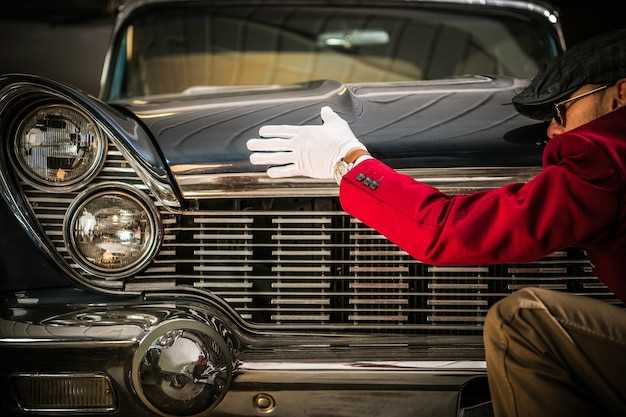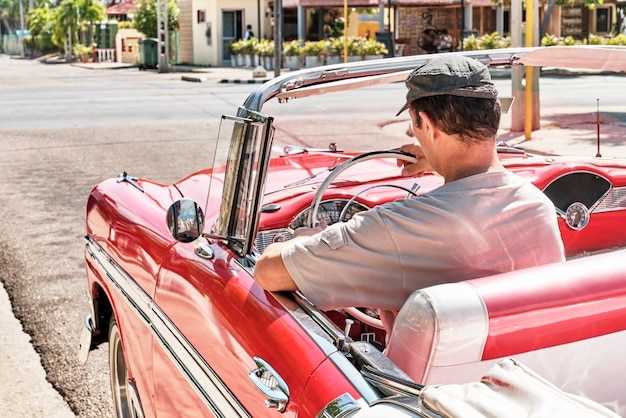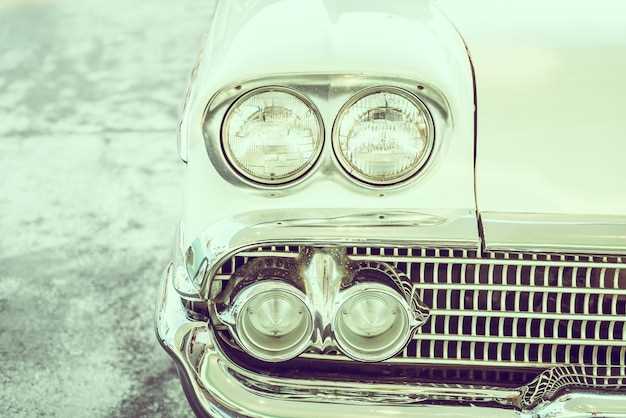
Classic cars hold a special place in the hearts of enthusiasts and collectors alike. Their integrity lies not only in their unique designs but also in the stories they tell from generations past. However, as road safety regulations tighten and technological advancements improve, the challenge of enhancing safety without compromising the original aesthetics and mechanics of these vehicles becomes increasingly significant.
The balance between modern safety features and the preservation of a classic car’s originality is a delicate one. Many classic car owners grapple with the dilemma of adding contemporary safety enhancements such as seat belts, airbags, or upgraded braking systems while maintaining the authenticity that defines these timeless machines. This article will explore various strategies that allow enthusiasts to keep their classic cars both safe and true to their roots.
By leveraging innovative solutions such as discreet installation methods and reversible modifications, classic car owners can enhance their vehicles’ safety without disrupting their quintessential charm. Our goal is to demonstrate that it is indeed possible to respect the integrity of classic automobiles while ensuring they meet modern safety standards, ultimately preserving their value and legacy for future generations.
Integrating Modern Braking Systems Without Altering Aesthetic Appeal
Upgrading classic cars with modern braking systems is essential for enhancing safety while maintaining the vehicle’s original integrity. This integration can be achieved through carefully selected components that provide superior performance without sacrificing visual authenticity.
One effective approach is the use of disc brake conversions that fit within the existing wheel design. These kits are often engineered to mimic the look of stock systems, ensuring that the car’s classic aesthetic remains intact. By choosing products that utilize similar caliper and rotor profiles, enthusiasts can enhance braking efficiency while preserving the vehicle’s original appearance.
Another strategy involves sourcing aftermarket parts designed specifically for classic models. These components are manufactured to resemble original equipment while incorporating modern materials such as improved alloys and composite materials. This combination enhances durability and performance, ensuring that the classic feel of the vehicle is maintained without compromising on safety.
Moreover, the installation process can be executed with attention to detail, ensuring that all modifications are reversible. This allows for easy restoration to the original braking system if desired. Utilizing adapters and custom brackets ensures that enhancements do not detract from the car’s meticulous design.
Finally, consulting with professional restorers who specialize in classic cars can provide invaluable insights. Their expertise can help in selecting the right balance between modern efficiency and historical fidelity, ensuring that safety improvements do not come at the expense of the car’s aesthetic appeal.
Upgrading Lighting Solutions to Improve Visibility and Safety Standards

Modernizing the lighting systems of classic cars presents a unique opportunity to enhance both safety and the vehicle’s integrity. Original designs often feature outdated technology, which can significantly reduce visibility during nighttime driving or adverse weather conditions. Upgrading to advanced lighting solutions, such as LED headlights and taillights, provides a dual benefit: improved illumination and energy efficiency.
LED lights offer a brighter output, which not only extends the driver’s ability to see further down the road but also makes the vehicle more visible to others. This enhancement is crucial, as many classic cars lack the robust visibility features of contemporary vehicles. Additionally, integrating daytime running lights can further boost safety by ensuring that classic cars are noticeable in all conditions, thereby reducing the risk of accidents.
When considering upgrades, it’s essential to maintain the aesthetic integrity of the vehicle. Many LED lighting options come in designs that mimic the vintage look of original components, ensuring that any modifications do not detract from the classic appearance. Options, such as replica-style LED lamps, can provide modern benefits while preserving the nostalgic charm of the vehicle.
Furthermore, proper installation of upgraded lighting is crucial. Ensuring that all lighting meets safety standards not only benefits the driver but also complies with modern regulations, offering peace of mind to enthusiasts concerned with legalities when driving their classic cars on public roads. In essence, thoughtful upgrades to lighting solutions represent a practical step towards enhancing safety without compromising the unique character of classic vehicles.
Retrofitting Seatbelts and Airbags While Maintaining Vintage Interiors

As vintage car enthusiasts increasingly prioritize safety, retrofitting seatbelts and airbags becomes essential. The challenge lies in enhancing safety without compromising the car’s aesthetic integrity. This process demands innovative solutions that blend modern technology with classic design.
When considering seatbelt retrofitting, it is crucial to select systems that provide maximum protection while being discreet. Many manufacturers offer retractable seatbelts that can be installed without altering the original upholstery or interior layout. Choosing colors and materials that match or complement the original interior can help maintain the vehicle’s authentic look.
Installing airbags in vintage cars can be more complex due to the need for precise placement and integration. Modern airbag systems can be adapted to fit within existing structures, such as steering wheels or dashboards. This approach can significantly enhance occupant safety while minimizing the visual impact on the car’s vintage elements.
Careful planning and execution are vital to ensure that any retrofitting maintains the vehicle’s integrity. Collaborating with experts who specialize in classic cars ensures that modifications adhere to safety standards while being respectful of the car’s original character. This commitment to preserving authenticity, alongside the enhancement of safety features, results in a well-balanced, vintage vehicle that offers peace of mind for both the driver and passengers.
